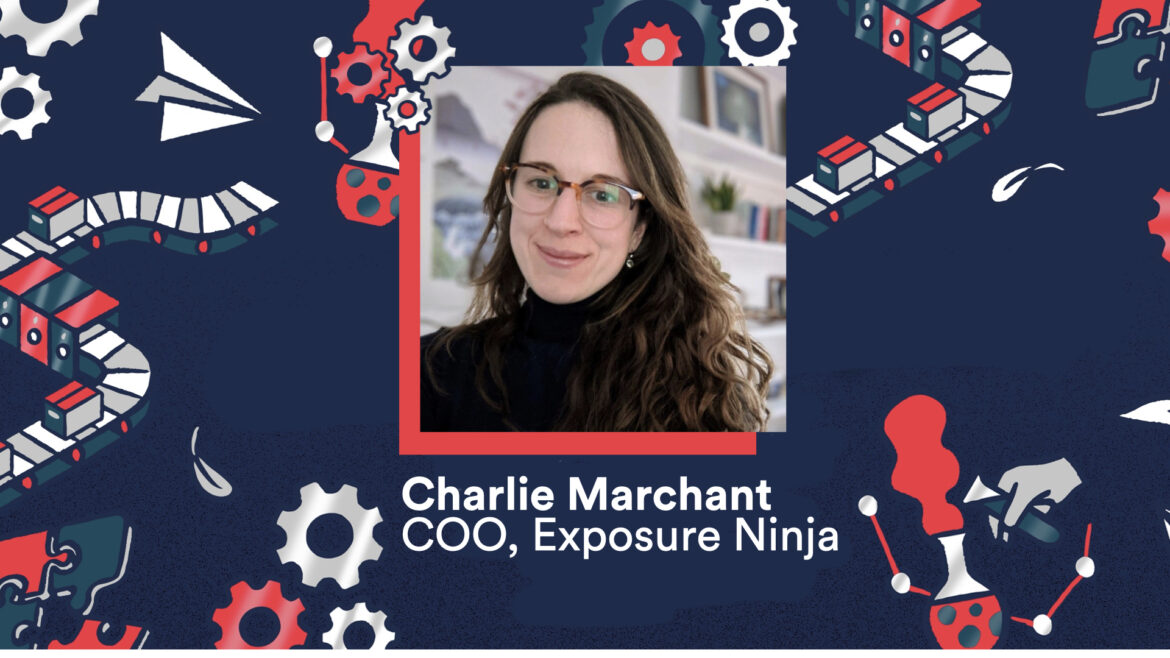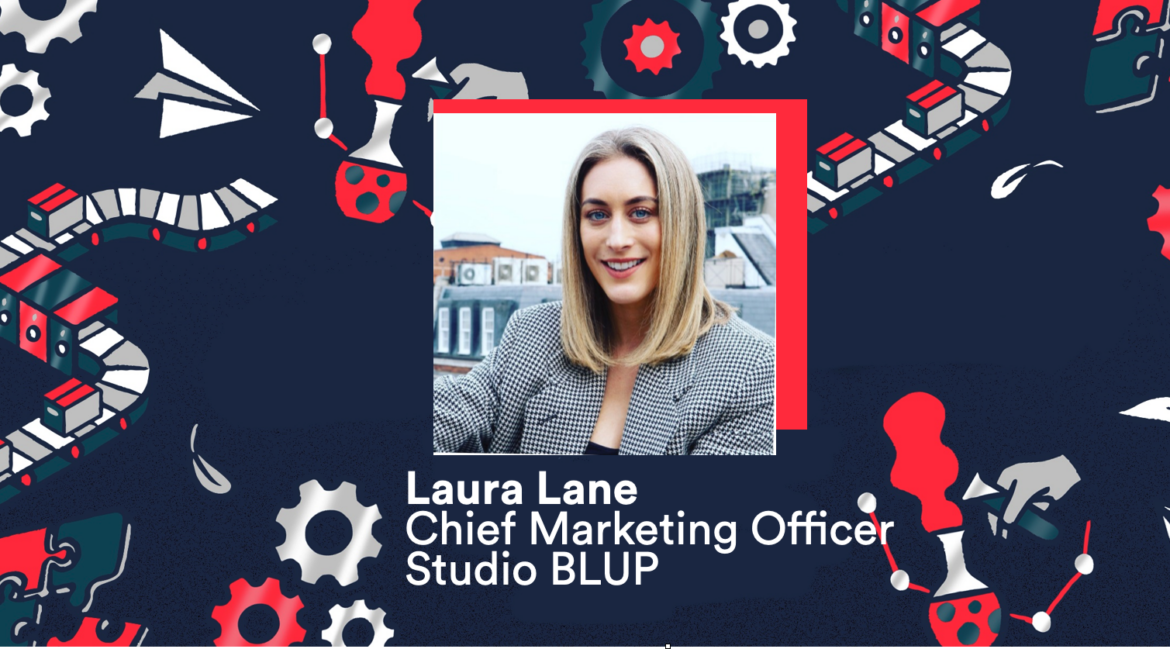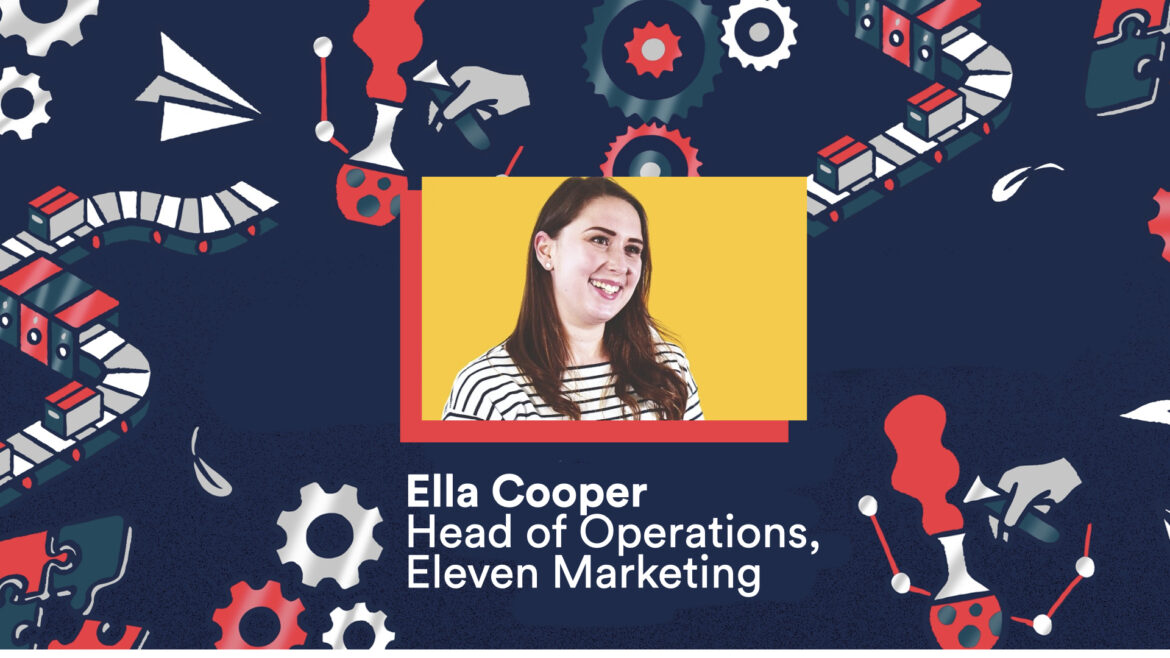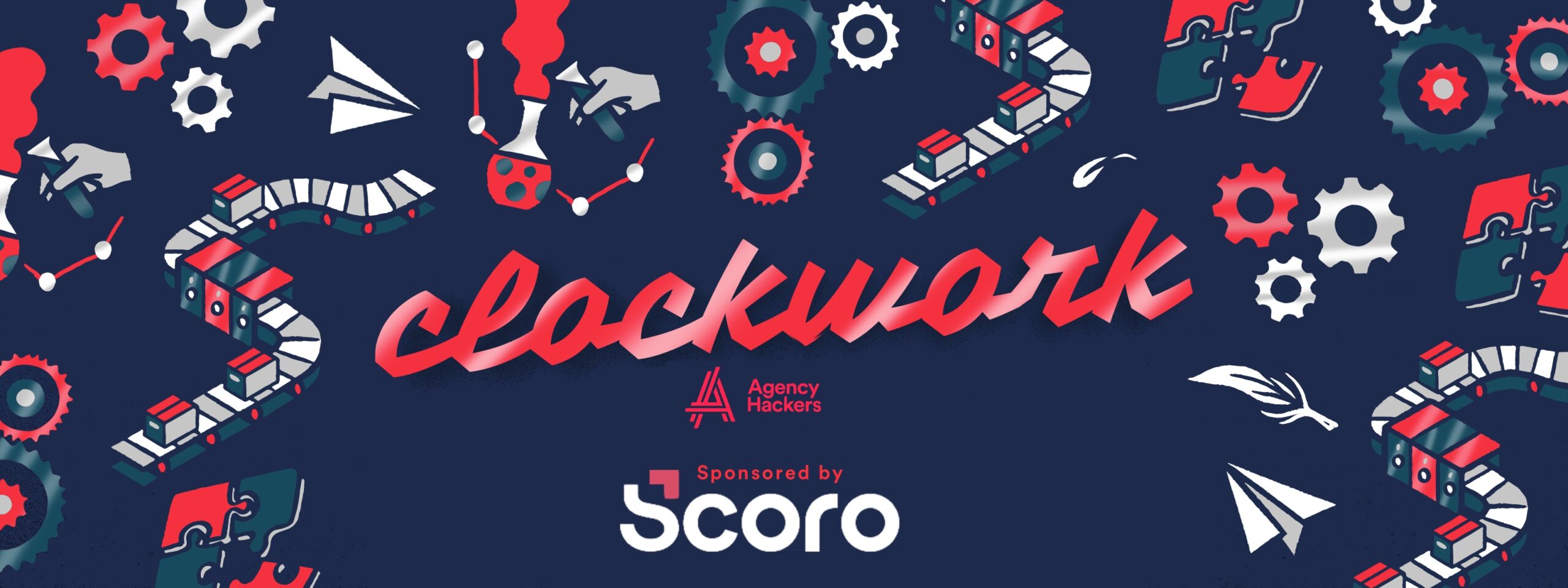How Do You Shape Your Role
in Operations?
with Charlie Marchant, COO – Exposure Ninja

At Exposure Ninja, Charlie Marchant has risen through the ranks from content marketer to COO. At Clockwork, she will lead a conversation on how to succeed and thrive in the fascinating world of agency operations.
“I’ve learned a lot hands-on within my role over the years, and the agency has grown from being under £1m revenue to a £3m+ revenue business during my tenure.”
“My role was originally General Manager. At the start we were struggling because some departments were running on standard operating procedures, some kept it all in their heads, and some had nothing.”
“As the business grew, my role moved away from ‘setting stuff up’ and became more strategic. Where are we getting revenue from? How can we increase our margins? Where are we going as a business?”
Over the years, Charlie has helped the business become more process driven and standardised – so clients get the same quality across the board, and client accounts and projects always run at a profit.
Join us at Clockwork on January 24th to reflect on your role in operations, and share with us how you’re making sure you have the impact you deserve.
How Do You Manage the Geese
that Lay the Golden Eggs?
with Laura Lane, CMO – Studio BLUP

How do you manage the geese that lay the golden eggs?
When Laura Lane joined Studio BLUP four years ago, there were a lack of processes to speak of.
“What the co-founders had built was incredible, but they had never worked for any other agency before, and there was obviously a lack of process,” says the agency’s chief marketing officer.
Studio BLUP’s founders, Dines and Alex, are very different. While Dines is the creative visionary, Alex has a more strategic outlook.
But Laura could see that while the agency had, and was continuing to make a name for itself, a lack of process was the biggest contributing factor for taking the next step forward.
“The most striking thing for me was a lack of process and structure around nurturing clients. There was a limited understanding of developing their business creative strategy with them. We needed to be looking at how we could work with them hand-in-hand as opposed to simply delivering executional creative.”
Since implementing this, BLUP:
- Look at whether a brief is right for a client – or if they’re in need of something different.
- Use insights and strategy from their BLUP:GEN audience network to redevelop and present new briefs to clients.
- Help and consult clients on how they could progress with a different approach.
The agency has since been able to develop its expertise in other areas besides simply design and execution of creative briefs, and has been able to explore other avenues, like tech creation and research development for big brands like Superdry and Amazon Prime.
And Laura’s not just seen an impact on the agency, but on the founders too.
“It’s like we’ve gone from boutique to boardroom. Implementing process and structure has also given us more accountability,” says Laura.
“But I’ve also seen a massive difference in both Alex and Dines, and how they use our processes in line with our growth strategy.”
Laura will be telling us all about her agency’s journey to implementing process – and how it’s impacted them for the better.
How to Grow by Focusing on Operations
and Intelligent Automation
with Simon Schnieders, CEO – Blue Array

Simon Schnieders is confident that Blue Array will come roaring out of a recession – and he sees his agency’s processes and operations as the key that will unlock growth.
“When I looked back at the 2008 recession, I could see that one of the first things to recover from the recession was SEO. So during Covid I made decision not to make anybody redundant.”
Sure enough, demand returned – and in 2021 nobody could hire fast enough.
Now, heading into another recession Simon is betting heavily on operational efficiency.
“The question we’re asking is: how can we improve operational efficiencies though intelligent automation?”
Foe example, Blue Array are using automation to increase the level of service – and give their team more client contact:
- “For example, teams are doing reporting manually at the moment, getting data from Google Analytics and Search Console and putting them in spreadsheets.”
- “But we want to spend more time on relationships instead! For example, creating a narrative around the data. The smart thing to do is build narrative around data – getting rid of that side of things has been #1 priority. It’s really easy to automate. It’s about getting rid of stuff that the client has no visibility on.
If you’re interested in bringing AI and machine learning to your business, Simon says there are a few things you’ll encounter:
- **Finding good partners to work with. “**I don’t think we’ll find anything off the shelf. We’ll have to hire one full time developer at least. In terms of bringing some AI to the business, that’s costly –so I need somebody who’s smart enough to know that there’s already a library within AI or ML that we can use.”
- Creating the culture around automation. “The pitch from me is: all that stuff that you don’t like doing is going to stop. You really don’t want to be spending your time doing it. We aren’t interested in making anybody redundant – we need your expertise.”
Interestingly, one of the huge dependencies automation relies on is something old fashioned – time tracking.
“For operational efficiency you need accurate time tracking. You simply have to have that in place, otherwise you have no idea where you’re spending your time.”
“We use time tracking data to see where can we intelligently automate what we’re doing. Behind the scenes, we can automate a lot of stuff that customers have no visibility on anyway.”
Join us at Clockwork to hear where Simon is on his journey, and reflect on how you can apply automation to your agency.
How to Keep Your Agency’s Processes and
Knowledge Fresh and Useful
with Ella Cooper, Head of Operations – Eleven Marketing

Head of Operations Ella Cooper had Eleven Marketing’s processes in place. It covered most things, from opening up the building to debriefing a client. Everything was all in one place.
But gradually, Ella realised her beautiful system was starting to decay.
“We just kept adding stuff. It became cumbersome and keeping up was difficult. People would say: ‘I know it’s on there somewhere’. It was sticking plaster upon sticking plaster.”
Sound familiar?
“The barometer was when new people joined the company – was I was confident that I could send them this resource and everything was in there? When I stopped referring to that, that’s when I realised that something’s broken here!”
“Structurally it needed to change.”
How Do You Get Everybody on the
Same Page in Your Agency?
with Paul Hunter, Head of Operations – Liberty Marketing

Last year was a stormy year for Paul Hunter and the Liberty Marketing team.
“We had two MDs leave, two other members of the leadership team resigned… and we lost two of our biggest clients.”
“It was really tough.”
Paul remembers the moment he realised just how fragmented the business had become. “I’ll never forget, we had all opened up our spreadsheets and we were all looking at different numbers. No one could tell how much we made that month!”
Paul and the team rallied. They lead the business through a remarkable recovery – much of which came down to reimagining how everybody works together.
Fast forward 12 months the business is in robust shape: it’s grown 30% in a year, it has replaced the lost clients, and it has a whole new management layer.
“It’s been an incredibly eye-opening experience.”
“We’re in much better health now and our pipeline is really good. It’s been a hard exercise in evaluating absolutely everything.” Join us at Clockwork to hear Paul share the story of what Liberty Marketing went through – and reflect on how you will react when a “perfect storm” batters your business.
